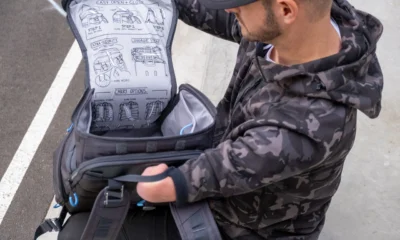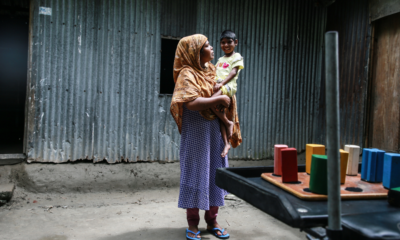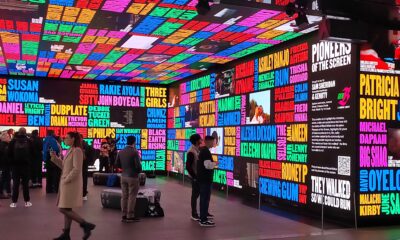Business
Freelance Writing with a Disability: Struggles and Triumphs

How Difficult Can Freelance Writing with a Disability Really Be?
Freelance writing can be hard on a non-disabled person, let alone freelance writing with a disability. Some disabled people who freelance may view it as the only way to have a real career due to their inability to drive, I am one of those people. I have Cerebral Palsy, and I get around using a wheelchair.
My name is Miranda, and I have been freelance writing since 2012. It started as a way to earn some “street cred” in the field while still earning my Bachelor’s degree in Literature and Language. I slowed down in 2013 after starting my Master’s in Professional Writing. Once that journey ended in 2015, I started looking for full-time remote writing work.
They don’t tell writers about trying to get a traditional full-time job with a company, only remote, that the rates are pretty laughable to survive on. At least, this was my experience. After years of rejections, acceptances, and ultimately, not making enough to live off of with the number of hours I was putting in, in 2018, I went my own way. I haven’t looked back since.
Honestly, I was never really keen on being my own boss. The idea made me nervous. My grandmother, the biggest cheerleader in my pursuit of the written word, always suggested it. Running my own business just looked too stressful, and I am a total worrywart. My opinion would change after helping a friend with her resume.
She was my best friend since Pre-Kindergarten, so, naturally, I was going to help. She grew up with me and knew me as the nerdy writer, so it didn’t surprise me when she asked. What surprised me was when she asked me to do her husband’s resume, and they both wanted to pay me. I denied it at first. The couple knew I didn’t have any work coming in and insisted. After completing their documents, I asked her, “Do you think I should try doing this full-time?’ Her response? “Absolutely.” Miranda the Freelancer was born.

© Pixabay
The Struggles
For the longest time, my bread and butter were resumes. I also offered other writing services, but everyone knew me for my resumes. It wasn’t until recently that I started turning the focus away from resumes.
The thing about resumes is everyone should have one, but not everyone needs someone to write them a resume. The resume business is a hot and cold one. Besides, one tends to get bored with writing resumes and cover letters constantly. I started searching for regular clients who could use me for my content writing abilities. Regular clients would also land me frequent work, which meant no living from resume to resume. It seemed like a win-win.
However, it’s not an easy task to find regular clients. I recommend that freelance writers look for leads every day. Some may turn into regular clients, but some may only be one-off projects. You can keep those clients on your clientele list; they may ask you for other services later. Once that project is completed, you will always need something to fill that gap. The downside is that daily lead searches can be pretty tiring, especially for those that have disabilities and may live with chronic pain.
I still have my first regular client to this day, but I have a reoccurring problem with them; communication. They still don’t respond to emails promptly, and payment schedules are very fuzzy. Communication is critical on both sides of the coin. Unfortunately, it is prevalent for freelance writers to have to chase payments.
My regular clientele list has been growing since I started lead searching daily. Even with the problems of receiving payments on time and lacklustre communication, I can earn multiple fees weekly, which has helped me tremendously. Working through exhaustion is something I have learned to live with, and breaks in between tasks can help remedy the situation.

© Pixabay
The Triumphs
A few weeks ago, I received an email from a small power washing company in New Jersey. They had been referred to me by someone who works with my website’s hosting domain. Referrals are a freelance writer’s best friend, and they got me my biggest project and payout to date. I did 15 landing pages for the company’s website and earned over $500.
The project and payout are still small potatoes compared to some of my peers, but in the words of my wise grandmother, “You’re doing so much better than when you first started!” I’m evolving at a good pace. I believe that if I can keep this up, I can build my business to be something special. I am incredibly thankful to that company for giving me the opportunity, and I would write for them again in the future.
Due to my partner working full-time and studying to be an electrician, I will never be able to get to a traditional job. I’ve made my peace with that and I’ve accomplished more than I ever thought possible since I started Miranda the Freelancer in 2018. I’m confident in my abilities to keep it growing, and my disability can never stop me. That’s something to be proud of.
Business
DWP Plans to Replace Regular Disability Payments with One-Off Grants Spark Major Backlash
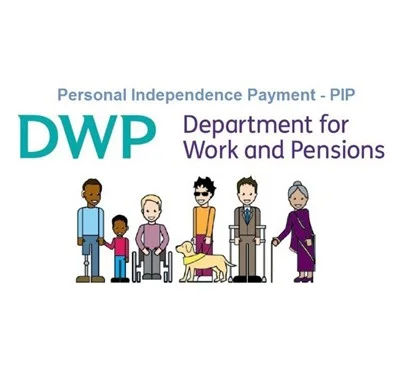
The Department for Work and Pensions (DWP) has ignited a storm of controversy with its latest proposal to overhaul the personal independence payment (PIP) system. The proposed changes, which would replace regular PIP with one-off grants for some claimants, have been met with fierce criticism from disability rights advocates and the broader public.
The government’s consultation aims to modernize the disability benefit system by scrapping the “one size fits all” approach of PIP, according to Work and Pensions Secretary Mel Stride. The plan suggests that assessments could be eliminated for certain conditions, with the focus shifting towards providing claimants with one-off grants or vouchers for essential services and equipment instead of regular cash payments.
This radical shift is driven by the government’s concern over the “unsustainable rate” of the benefits bill, particularly due to the increasing number of mental health claims. However, critics argue that the changes would undermine the financial stability of disabled people, many of whom rely on PIP to manage their daily lives and additional costs associated with their disabilities.
James Taylor, from the disability equality charity Scope, expressed deep skepticism about the motivations behind the consultation, labeling it as a tactic to cut costs at the expense of vulnerable individuals. “Life costs a lot more for disabled people,” Taylor stated, emphasizing that removing a stable source of income would not address any societal issues but rather exacerbate them.
Research by Scope suggests that disabled households require an extra £975 per month to maintain the same standard of living as non-disabled households, highlighting the crucial role of PIP in bridging this financial gap. The proposed reforms could lead to significant reductions in income for disabled individuals, with PIP accounting for about 21% of their total income and even more for those in the lowest income brackets.
The potential reform has also drawn criticism from Iain Porter of the Joseph Rowntree Foundation, who views it as an unjustified burden placed on those already facing significant challenges. He argues that the focus should instead be on addressing the root causes of ill health and poverty that affect millions in the UK.
The proposed changes have been further complicated by the recent findings of the United Nations Committee on the Rights of Persons with Disabilities, which accused the UK government of failing to address systemic violations of disabled people’s rights. This international scrutiny underscores the need for reforms that genuinely support disabled individuals rather than pushing them further into hardship.
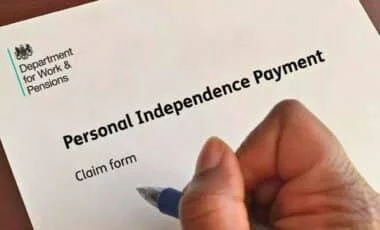
Critics are calling for a benefits system that is compassionate, tailored, and supportive, rather than punitive and cost-cutting. As the government moves forward with its consultation, the outcome will significantly impact the lives of millions of disabled persons across the UK, making it a critical issue of fairness and social justice in the lead-up to the general election.
As debates and discussions continue, it is clear that any changes to the PIP system must be handled with utmost care to avoid unintended consequences that could leave many of the most vulnerable in society at greater risk of poverty and exclusion.
Business
Starbucks and its commitment to accessibility: Creating inclusive spaces for everyone

Starbucks Coffee Company announced on February 14th that it will leverage its growing store presence to support and promote the inclusion of partners, clients, and communities it serves. To achieve this, the company has created an Inclusive Spaces Framework, which aims to enhance independence, choice, and comfort for all its consumers and employees: “Building and scaling an Inclusive Store Framework is central to our mission of connection and will lead to greater access for all” stated Katie Young, Senior Vice President of Store Operations.
One of the first Starbucks customers based on the Inclusive Spaces Framework/Starbucks
Starbucks’s Inclusive Spaces Framework has been developed by a distinctive community of customers, workers, partners, and accessibility experts, with the primary goal of providing scalable accessibility solutions for all commercial spaces. This concept began to take shape during the Covid-19 pandemic, where social distancing and the risk of contracting the disease prompted some branches to create specific time blocks. During these blocks, immunocompromised, elderly, and disabled customers could shop in a less crowded environment.
Starbucks inaugurates its first café supported by the principles of the Inclusive Spaces Framework
On February 16th, Washington, D.C. became the first city to open a Starbucks designed to provide accessible service for everyone. These innovations include a multitude of improvements, both physical and digital, that streamline the entire customer interaction process with the establishment and staff, enabling unrestricted access.
A new employee at the Washington D.C. Starbucks showcasing the facilities/Starbucks
Among these novelties, the coffee company has highlighted updates to the point-of-sale (POS) systems, which have been transformed into portable devices, making it easier for customers to make purchases and acquire products. Through an intuitive design, supported by a voice assistant and accompanied by visual confirmations, this setup caters to the needs of all customers without any distinction.
On the other hand, this revamped store features new lighting and an improved sound system, both designed to offer a more inclusive experience by avoiding glare and reverberations. Additionally, the order tracking panels in this store have been updated, allowing customers to easily and instantly know which stage of preparation their purchase is in. Furthermore, multiple communication channels have been enabled to notify the customer when their order is ready.
Finally, the store has been designed to ensure the complete independence of people with disabilities when accessing and placing their orders. This is achieved through electric doors, which can be activated by a button at different heights and angles, reducing the effort required to open them. Additionally, continuous, and obstacle-free pedestrian pathways have been created, and the counters are lower with overhangs to accommodate wheelchairs, making interaction with employees and the store more accessible.
The new staff at Starbucks in Washington D.C./Starbucks
However, for most retail centers, remodelling their premises to comply with ADA (The Americans with Disabilities Act) regulations poses a significant challenge. That’s why Starbucks will not only begin remodelling its establishments but also ensure that its framework of inclusion is accessible to everyone, just like its stores. This framework will provide a gradual program for designing inclusive spaces that enhance the retail environment, surpassing the requirements of the ADA.
By: Álvaro Lago
For latest updates Download P+us app available on Google App Store
Business
Aarti Sahgal: Creating A World In Which People With Disabilities Belong

Aarti Sahgal is a woman with a mission. She is the founder and CEO of Synergies Work, a non-profit organization that helps entrepreneurs with disabilities develop sustainable enterprises. She is also a mother to two kids, one of whom has Down syndrome. She understands directly the obstacles and opportunities that individuals with disabilities experience in society, and she is committed to creating a world in which they belong.
Sahgal’s work grew out of her personal experience parenting a disabled child and discovering a lack of inclusivity and assistance in the education and employment systems. She recognized that people with disabilities possess special skills and capabilities that are frequently overlooked or underestimated by others. She chose to leave her corporate position and devote herself to enabling people with disabilities to achieve their hobbies and goals.

Synergies work provides end-to-end business solutions, bridging the opportunity gap between the disability and business sectors. It provides training, mentoring, funding, and networking opportunities for entrepreneurs with disabilities, as well as access to a varied and supportive community. It also collaborates with businesses and groups to increase disability inclusion and diversity in the workplace and marketplace.
Since its establishment in 2016, Synergies Work has assisted over 200 entrepreneurs, the vast majority of whom are women and people of color. The company aims to empower 1 million new entrepreneurs with disabilities by 2027 by collaborating with disability organizations and businesses that prioritize creating an inclusive ecosystem.
Sahgal aims to represent and reflect the different communities in which she works, as well as to foster a workplace climate in which everyone has the opportunity to participate, grow, belong, and succeed. Sahgal’s Disability Inclusion Action Plan aims to promote inclusivity and diversity as a source of strength and value.
By- Rowland Obiosah



